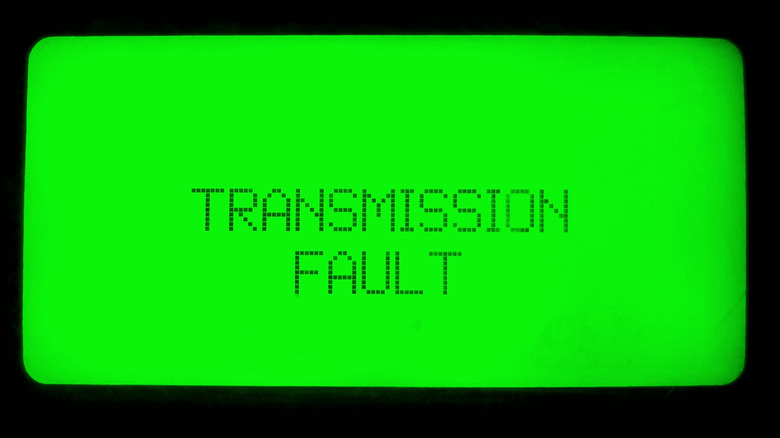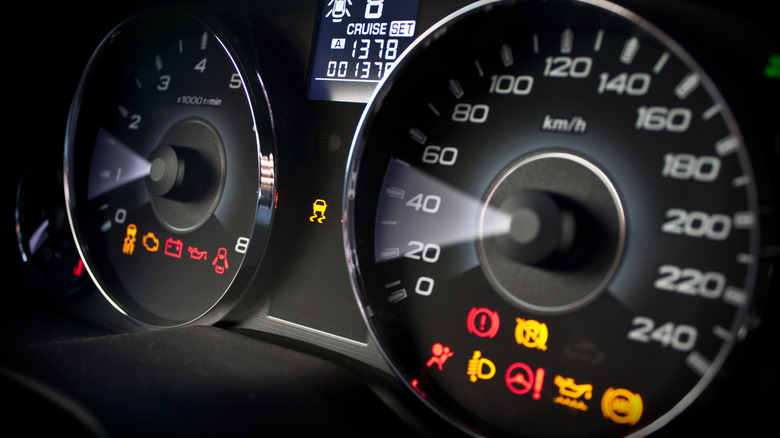What Does A Transmission Warning Light Look Like & What Might Cause It To Turn On?
The transmission warning light is among the many dashboard lights that drivers should be familiar with. However, there's a catch: The warning light of the transmission module comes in many shapes and forms, depending on the make and model of your vehicle. Some cars do not even have a dedicated warning light for the transmission.
My old Mitsubishi Mirage subcompact would illuminate the check engine light, a red temperature warning light, and a blinking green Drive (D) light on the dashboard to warn me of an overheating transmission. It happened when I removed the throttle body for thorough cleaning and forgot to top off the radiator with fresh coolant. Disassembling the throttle body from the intake manifold requires disconnecting some coolant lines, which will cause the coolant to drain significantly after removal from the throttle body housing.
In most cases, the transmission warning light resembles a flashing overdrive light or a steady amber gear light with an exclamation mark (!) or a thermometer symbol in the center. In some cars, the transmission warning light could be a string of text or an error message within the instrument cluster. Whatever the case, you should never ignore an illuminated transmission warning, since the error code could mean many things.
What causes the transmission warning light to illuminate?
An illuminated transmission warning light points to an issue, error, or defect with the automatic transmission. In the absence of symptoms such as shift shock, strange grinding noises, or an unresponsive gear lever (e.g., putting it in Drive does not move the car, even when pressing the gas pedal), a transmission warning light primarily indicates the sump is low on automatic transmission fluid (ATF) or the fluid is overheating altogether; like what happened to my Mirage.
The worst-case scenario is a failing gearbox, or something has gone wrong with the internals, sensors, electronics, solenoids, valve body, or clutch packs. Automatic transmissions are relatively durable, provided they receive diligent care and maintenance.
However, failing to drain and replace the ATF at the recommended intervals is an early death sentence for any automatic transmission. The ATF is like the glue that holds everything together, enabling the gearbox to execute smooth and prompt gear changes. When the ATF overheats, deteriorates, or if the sump doesn't have enough ATF due to neglect, it could lead to more damage and exorbitant repair bills.
What to do when the transmission warning light turns on
If you notice the transmission warning light turned on while driving, slow the vehicle down immediately and find a safe place to stop and park the car. If you're on the highway, avoid driving the vehicle at higher speeds to prevent overstraining an already-complaining gearbox. Moreover, avoid jackrabbit starts or racing the engine. The point is to reduce your speed and find an adequate area to pull over.
Depending on the error or fault, the transmission may enter into a self-preserving "limp mode" setting to prevent further and more costly damage. When a vehicle is running in limp mode, the transmission may refuse to engage gears, and you'll notice a noticeable drop in engine performance, meaning you have no choice but to continue at a slower pace. Try to drive to the nearest dealership or garage to diagnose the fault. Remember that a bad transmission will not damage the engine, but can most likely cause accelerated wear and tear to critical engine parts.
If you're handy with fixing cars, pop open the hood and try checking the cooling system first. As discussed above, a lack of coolant in the radiator can cause the ATF to overheat, triggering the transmission warning light. Additionally, check the ATF fluid level by pulling the dipstick, if equipped. Replenish when necessary and see if the warning light turns off. Otherwise, have a professional take a look.


